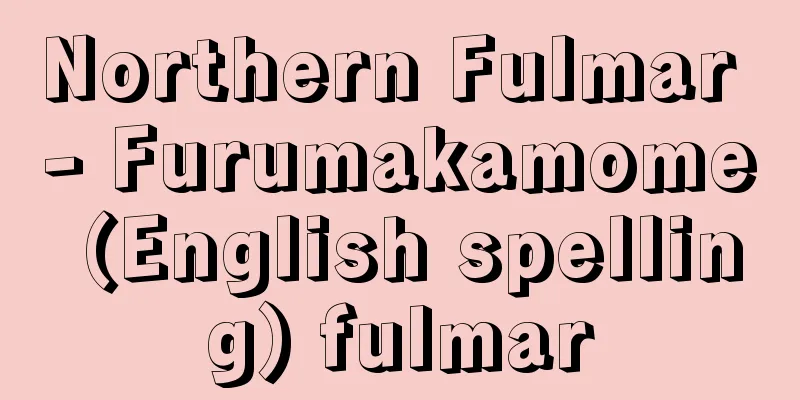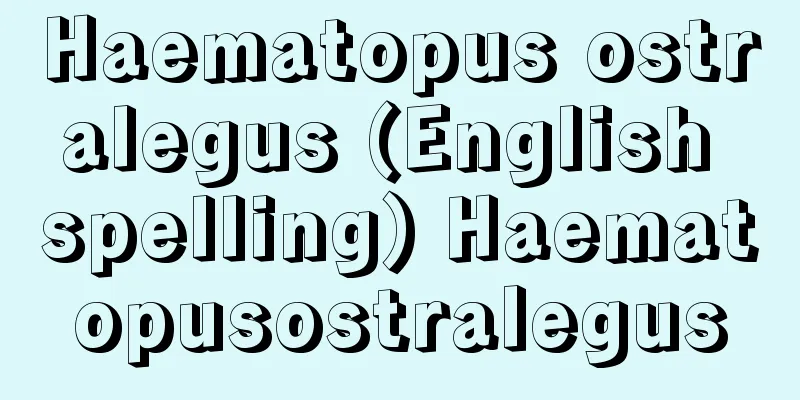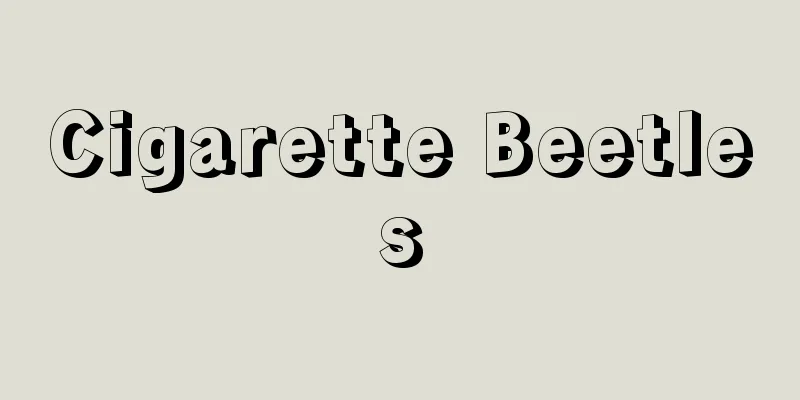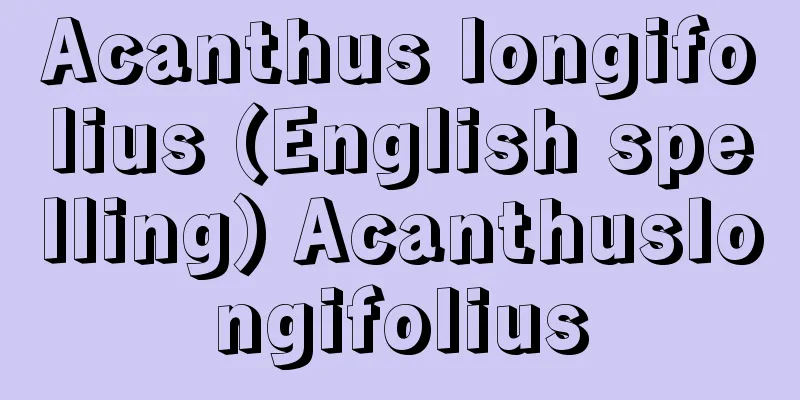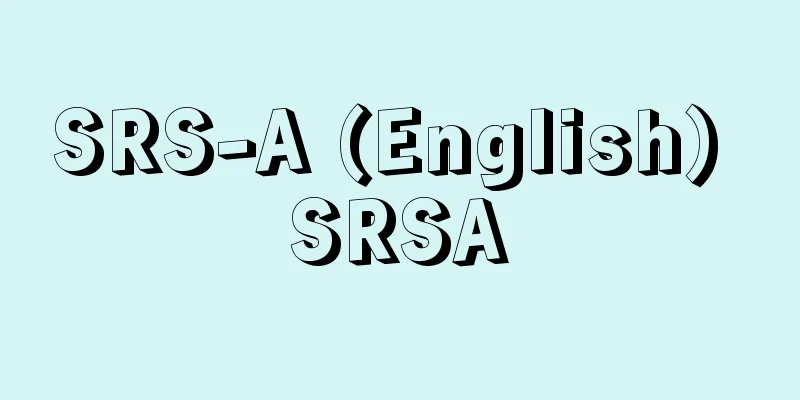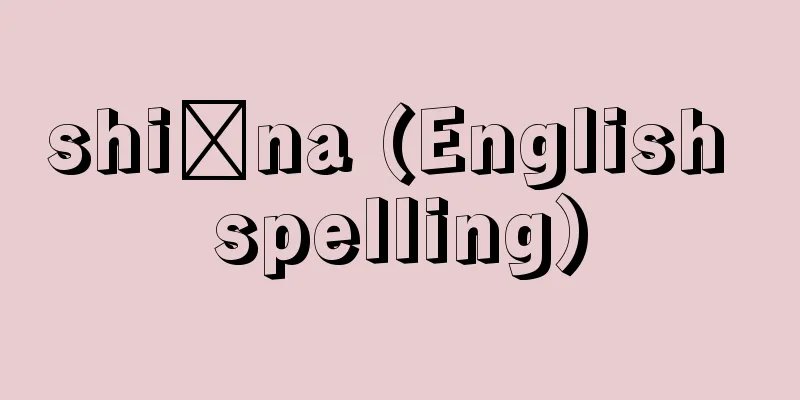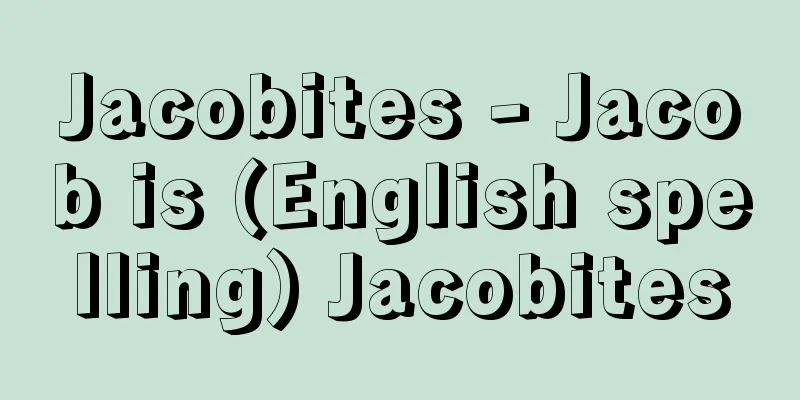Noh mask - Noumen
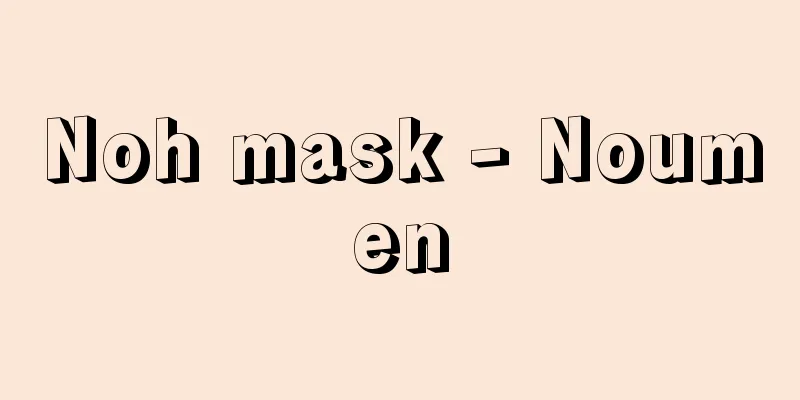
|
Masks used in Noh. They are called "omote" (front), not "men" (front). They are carved from cypress wood and painted with pigments. Kiri, camphor, and katsura (Japanese katsura) may also be used. Depending on the type, copper is set into the eyes and teeth and plated. Hair may also be implanted in the beard and eyebrows. Compared to gigaku and bugaku masks, they are characterized by being thin and small. In addition to those that depict a momentary expression, those with intermediate or infinite expressions are designed to be used for a long time and to express psychological feelings. In Zeami's Sarugaku Dangi, the names of makers of the Okina mask, an old style that existed before Noh masks, are listed, following Nikko and Miroku, as well as Shakuzuru, a master of demon masks, Echi, a master of female masks, Ishioubyoue, Tatsuemon, Yasha, Bunzo, Koushi, Tokuwaka, and Chigusa. The original masks that they are said to have made are carefully handed down as the "honmen" of each school. Based on what Zeami said and the tradition of these schools, it would seem that Noh masks actually existed before the perfection of Noh, and we would have to think that there was a fairly advanced form of masked drama before Kan'ami and Zeami. Following this semi-legendary period of creation, from the end of the Muromachi period to the Momoyama period, Sankobo, Hannyabo and other master craftsmen emerged, and there are now around 60 types of Noh masks that appear in documents. The three Deme family lines descended from Sankobo are famous, with Kawachi and Zekan excelling in their techniques. The Edo period was a time of copying old works, and mask makers were hereditary and served the shogunate. The Wakaonna mask, which is the basis of female masks in the Kanze school, can be said to be the last original mask made by Kawachi. Since the Meiji period, Irie Biho and Kitazawa Koun have been famous Noh mask makers, and there are still a few sincere makers in the present day. Noh masks of Christ are sometimes created for new Noh plays, and Noh mask classes at cultural centers and other places are also popular. There are about 40 to 50 basic types of Noh masks. There are probably around 100 types that are commonly used on stage. If you count derivative masks, the number is about twice that. (1) The Hakushikijo and Kokushikijo types related to "Okina" are in a class of their own. (2) Among the old man masks, there is the commoner Waraijo, the sacred Kojo, the dancing Maijo, and the superhuman Akujo. (3) Among the women's masks, there is the young Komote, Magojiro, Wakame, Zo, and Oumime; the slightly aged Shakumi and Fukai; the vengeful spirit masks Deigan and Hashihime; and the ghost mask Yaseonna. The masks of old women include Uba and Rōjō. (4) For men, there is the young monk Kasshiki. For young men, there is Juroku, the nobleman Chujō, and the man of Kantan, who is also used for young male gods. For fierce warriors, there is Heida. For vengeful spirits, there is the crescent moon and the mysterious warrior. For male ghosts, there is the thin man and the frog. For fairy-like boys, there is the boy Doji, the child Jido and the red-spotted monkey. (5) For strange-looking masks, there is the tengu mask Oobeshimi, the Yama mask and the demon Kobeshimi. The masks of positive deities include Ootobide, Kotobide, and Kurohige of the Dragon God. The frown of the demon masks and the lion's mouth of the same series. The female demons include Hannya and Ja. (6) The animal masks include Yakkan. (7) The Buddha masks include Tenjin and Fudo. (8) The one-panel special masks include Yorimasa, Yoroboshi, Semimaru, Kagekiyo, Shunkan, Yamamba, etc. Noh masks are not merely a costume tool; they are so important that the performance of a piece is determined by the mask used, and Noh actors treat them as sacred objects. Wearing a Noh mask is the prerogative of the shite, and the wakikata, who only play real men, never use one. After donning his costume in the dressing room, the shite gathers his spirit in the mirror room, then puts on his Noh mask and immerses himself in the role, hanging behind the curtain and waiting to appear. Basic techniques include "kumoru," in which the mask is tilted slightly downward to express grief or determination, "teras," in which the mask is tilted slightly upward to show joy, "men wo tsukau," in which the mask is looked around left and right or to listen to the sound of the wind or insects, and "men wo kiru," in which the mask is moved violently at sharp angles. Roles in which the face is unmasked are "hitamen," meaning that the actor's own face is used as the Noh mask, with no facial expression or makeup whatsoever. [Masuda Shozo] "Noh Masks" by Nogami Toyoichiro (1944, Koyama Shoten)" ▽ "A Collection of Noh Masks Held by the Kanze Family, edited by Katayama Kuroemon (1954, Hinoki Shoten)" ▽ "Noh Masks" by Shirasu Masako (1963, Kyuryudo)" ▽ "Introduction to Noh Masks" by Konparu Nobutaka, Masuda Shozo, and Kitazawa Sanjiro (1966, Heibonsha)" ▽ "Noh Masks" by Nakamura Yasuo (1979, Jinjindo)" ▽ "Noh and Noh Masks" by Kongo Iwao (1984, Sogensha) ▽ "One Hundred Views of Umewaka Noh Masks, edited by Umewaka Noriaki (1985, Heibonsha)" [Reference] | |Edo period (18th century) Length 21.6 x width 14 cm. Collection of the Metropolitan Museum of Art . Female mask (Komen) Edo period (18th century) Length 21.6 x width 14 cm. Collection of the Metropolitan Museum of Art . Male Mask (Lieutenant General) Source: Shogakukan Encyclopedia Nipponica About Encyclopedia Nipponica Information | Legend |
|
能に用いる仮面。「おもて」とよばれ、「めん」とはいわない。ヒノキを彫り、顔料(がんりょう)で彩色して仕上げる。キリ、クスノキ、カツラを材料とすることもある。種類によっては目や歯に銅をはめ込み、めっきを施す。ひげやまゆげなどに植毛を施すこともある。伎楽(ぎがく)面、舞楽(ぶがく)面の類に比べ、薄く小形につくられているのが特徴。瞬間的な表情を写したもののほか、中間表情とか無限表情とかよばれるものは、長期間の使用や心理表現の可能な工作がくふうされている。 世阿弥(ぜあみ)の『申楽談儀(さるがくだんぎ)』には、能面以前の古い形態である翁(おきな)面の作者として、日光、弥勒(みろく)の名に続いて、鬼の面の上手(じょうず)の赤鶴(しゃくづる)、女面の上手の愛智(えち)ほか、石王兵衛(いしおうびょうえ)、竜右衛門(たつえもん)、夜叉(やしゃ)、文蔵、小牛(こうし)、徳若、千種(ちぐさ)らの名が記されている。彼らが打ったと伝える創作面は、各流儀の「本面(ほんめん)」としてたいせつに伝承されている。世阿弥の語ったことと、この流儀の伝承を前提とすると、能面がむしろ能の完成に先だっていたことにもなるし、観阿弥(かんあみ)・世阿弥以前に、かなり高度な仮面劇があったと考えざるをえないことになる。このなかば伝説的な創作期に続いて、室町末期から桃山時代にかけては、三光坊、般若(はんにゃ)坊ほかの名工が出、能面の種類も文献に現れるだけで60ほどになる。三光坊の流れをくむ出目(でめ)家の3系統が名高く、河内(かわち)・是閑(ぜかん)などが技巧に秀でている。江戸時代は古作の模写時代であり、面打ちは世襲となって幕府に仕えた。観世流が女面の基本とする若女(わかおんな)は、河内の打った最後の創作面といえる。明治以降も入江美法(びほう)、北沢耕雲は著名な能面作家であり、現代も少数だが、真摯(しんし)な作家がいる。新作能のためのキリストの能面が創作されることもあり、一方ではカルチャー・センターなどの能面教室も流行している。 能面の種類は基本型が40~50ほど。普通に舞台で用いられるものは100種程度であろう。派生面を数えるとその2倍程度となる。(1)『翁』関係の白式尉(はくしきじょう)・黒式尉(こくしきじょう)の類は別格。(2)老人の面に、庶民の笑尉(わらいじょう)、神聖みのある小尉(こじょう)、舞を舞う役の舞尉(まいじょう)、超人的な悪尉(あくじょう)の類。(3)女面に、若い女の小面(こおもて)、孫次郎、若女、増(ぞう)、近江(おうみ)女。ややふけた女の曲見(しゃくみ)、深井。怨霊(おんりょう)の面に泥眼(でいがん)、橋姫。死霊の面に痩女(やせおんな)。老女の面に姥(うば)、老女。(4)男面には、年若い修行僧の喝食(かっしき)。若い男の面に十六(じゅうろく)、貴族の顔の中将や、若い男神にも流用する邯鄲男(かんたんおとこ)。荒々しい武士の面に平太(へいだ)。怨霊の面に三日月、怪士(あやかし)。男の死霊の痩男(やせおとこ)、蛙(かわず)。妖精(ようせい)的少年に童子(どうじ)、慈童や猩々(しょうじょう)。(5)異相面に、天狗(てんぐ)の面の大癋見(おおべしみ)、閻魔(えんま)や鬼神の小癋見(こべしみ)。陽性の神の面に大飛出(おおとびで)、小(こ)飛出、竜神の黒髭(くろひげ)。鬼の面の顰(しかみ)、その系列の獅子口(ししぐち)。女の鬼の般若、蛇(じゃ)。(6)畜類面に野干(やかん)。(7)仏面に天神、不動。(8)一曲の専用面に頼政(よりまさ)、弱法師(よろぼし)、蝉丸(せみまる)、景清(かげきよ)、俊寛、山姥(やまんば)などがある。 能面は単なる扮装(ふんそう)の道具ではなく、用いられる能面によってその曲の演出が決まるほどの重要さをもっており、能役者はこれを神聖なものとして扱っている。能面をかけるのはシテ方の特権であり、現実の男性にだけ扮するワキ方が能面を用いることはまったくない。楽屋で装束をつけたシテ方は鏡の間で精神を統一し、最後に能面をかけて役に没入し、幕にかかって出を待つ。能面をややうつむかせて嘆きや決意を表す「クモル」、ややあおむかせて喜悦の情を見せる「テラス」、左右を見回したり風や虫の音を聞いたりする「面ヲツカウ」、鋭角的に激しく動かす「面ヲ切ル」などが基本の技法である。素顔の役は「直面(ひためん)」、つまり自分の顔をそのまま能面として用い、顔面表情や、メーキャップをすることはまったくない。 [増田正造] 『野上豊一郎著『能面論考』(1944・小山書店)』▽『片山九郎衛門編『観世家伝来能面集』(1954・檜書店)』▽『白洲正子編『能面』(1963・求龍堂)』▽『金春信高・増田正造・北澤三次郎著『能面入門』(1966・平凡社)』▽『中村保雄編『能面』(1979・駸々堂)』▽『金剛巌著『能と能面』(1984・創元社)』▽『梅若紀彰編『梅若能面百姿』(1985・平凡社)』 [参照項目] | |江戸時代(18世紀) 長さ21.6×幅14cmメトロポリタン美術館所蔵"> 女面(小面) 江戸時代(18世紀) 長さ21.6×幅14cmメトロポリタン美術館所蔵"> 男面(中将) 出典 小学館 日本大百科全書(ニッポニカ)日本大百科全書(ニッポニカ)について 情報 | 凡例 |
Recommend
Ocelot - Ocelot (English spelling)
It is a member of the Felidae family of the Carni...
Katsu Kaishu
...Koyoshi's Edokko samurai temperament is al...
Śeṣa (English spelling) Sesa
…While Shiva is associated with mountains, Vishnu...
Ashot (English spelling)
?‐890 The first king of the Bagratid dynasty of Ar...
Fujimatsu Kaga Tayu - Fujimatsu Kaga Tayu
The stage name of a Shinnai-bushi tayu. There have...
Bubble bath - Kihoyoku
...It is used to treat back pain, bruises, sprain...
Tobol'sk
A city in Tyumen Oblast, Western Siberia, central ...
Sonatine - sonatina (English spelling) Italian
A musical term. A contraction of sonata, commonly...
Maeda style
The name of a school of Heikyoku. In the Edo perio...
Victory cry
Sake from Toyama. The rice used is Gohyakumangoku ...
Ran (English spelling)
… In Norse mythology, Ægir, lord of the sea, poss...
Kakuyarai - Kakuyarai
A type of yari-rai made by arranging bamboo vertic...
Okamochi - Okamochi
〘 noun 〙 A flat bucket-like object with handles an...
Onigiri (toy) - Onigiri
…At this age, children have the habit of putting ...
Kuwagatai stone
A type of stone bracelet-shaped treasure made in ...
